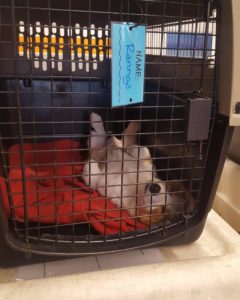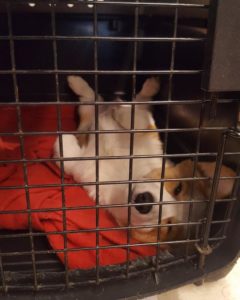Why Does My Dog Need Breaks at Daycare?

We all send our dog to daycare for the same reason – to make friends and burn off energy! So when a pet parent can’t find their dog playing in photos or on our live webcams, it can be confusing and frustrating.
At Canine to Five, our goal is for all dog interactions to be safe, healthy, and balanced. Our primary tool for dealing with unbalanced interactions is redirection. If we are able to engage a dog, get their attention, and redirect them, then the dog is likely still in a healthy, learning mindset. As dogs become more aroused, anxious, or stimulated, they also become increasingly more challenging to redirect. This is when we tend to see unbalanced interactions and reduced inhibition control.
WHAT IS AROUSAL IN DOGS?
When we talk about dogs being aroused or having our pack’s arousal level be high, we are referring to a state of physiological alertness and readiness for action.
- When a dog experiences a stressful situation, the arousal stays with them for a long time
- When a dog experiences multiple stressful situations in close succession, the arousal from each situation builds on top of each other, or “stacks”
- After experiencing a stressful situation, it can take a dog up to 72 hours to process the arousal and get back down to “normal”!
Daycare is a stimulating environment and, for many dogs, it is the most exciting thing they experience in their day-to-day routine. In order to help dogs cope with their excitement, our Pack Leaders utilize decompressing breaks. We strive to stay aware of each dog’s mental state, and we will give a dog a break at signs of unhealthy behavior. We know that if a dog is allowed to engage in an unhealthy behavior, it is learning that behavior. By staying consistent in giving breaks at early signs of over arousal, dogs will learn how to regulate their own play within the group and how to take breaks on their own.
WHEN DOES A DOG NEED A BREAK?
Dogs showing unbalanced/unhealthy behaviors that we are no longer able to redirect through management or playroom tools may need a break.
Behaviors include:
- Not reading other dogs’ cutoff/space signals
- Bullying behavior
- Reactivity
- Exhibiting more and more aggressive space signals
- Fixation
- High intensity play without self-regulation or calming signals
If we can identify what triggers a dog’s arousal, we can be proactive in keeping its arousal level low and giving breaks during times the trigger is present.
Triggers include:
- Pick-ups/drop-offs
- Outside rotation
- Shift change
- Meal time
- New people
- The pool/hose
Certain dogs can be identified as needing more consistent breaks in order to be more successful in group play.
Special cases include:
- Low threshold, or “small bucket” dogs
- Dogs who are at daycare 5 days a week
- Young/adolescent dogs who are still developing their skill sets
- Overnight boarding dogs
- New adult dogs who have never been to daycare
By ensuring each dog is in a healthy mindset, we are able to teach the appropriate skills and behaviors they need to be successful in group play. Over time, many dogs become ideal daycare candidates with a full repertoire of tools at their disposal!
WRITTEN BY
Cullen Perry | Canine to Five
Training Manager
Interested in sending your dog to daycare? Here’s what you’ll need to start:
- Your pup must be at least 12 weeks old
- They must have their DHPP, Lepto, Bordetella, and Rabies vaccines (Rabies by 18 weeks old for puppies)
- Puppies over 9 months old must be spayed/neutered to participate in our pack-style environment; Unaltered dogs may continue to join us for Private Play
If your dog is eligible to start, click here to fill out our new client inquiry form and our Canine Concierge will get in touch with you to go over next steps!



